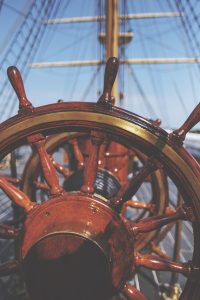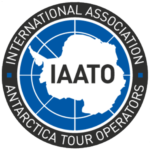Despite the fact that it is a much smaller vessel compared to others, the technology on board a cruise ship greatly helps in navigation. If there’s one thing that sets our sailing trips apart, it’s that you’ll find cutting-edge technology on our boats, all to make your trip much safer and more enjoyable.
This technology is necessary, especially when we are talking about taking an expedition to a place where the weather conditions are less favorable, for example, Antarctica. This technology is distributed throughout the boat through different instruments. So that you can learn more about their contribution on the sailboat, let’s take a closer look.
Current Navigation Instruments
Navigation aboard a cruise ship is improved and simplified thanks to the use of these navigation instruments. Let’s look at some of the most important ones.
GPS
The Global Positioning System is one of the most important instruments on a sailboat. Long gone are the years when you had to look at the stars to know where you were or where you had to take out your spyglass in search of land.
Thanks to GPS, the sailboat makes use of satellite signals to determine its position, both in latitude and longitude. This instrument can be attached to other devices on the boat, such as a monitor, to display the data it displays, thus facilitating navigation.
There are quite a few different models of GPS, one of the most advanced being the Plotter model that incorporates nautical charts, but we will talk about this specific model more
Radar
Radar is a navigational instrument that uses electromagnetic waves to detect objects at long distances. Thanks to the radar, navigation is much easier when visibility conditions are low, for example if there is fog, heavy rain or darkness.
When it comes to places where the weather is adverse, having a radar is a lifeline. Thanks to the use of radar, other ships can be detected, in fact, it is normal for them to be detected at distances where they are not even visible to the human eye.
Smaller objects such as buoys, reefs, islands or the mainland can also be detected with radar. Radar can also detect moving blocks of ice, which is important when navigating places like Antarctica.
In addition to all these detections, the radar is also capable of detecting rain and storms, which allows the sailboat to plan navigation much better and therefore not enter stormy areas. Radar is one of the most important tools of the sailboat to achieve a much safer navigation.
Probe
Another of the technological instruments with which a much safer navigation is achieved is the probe. The sonar is capable of avoiding sailboat collisions and is especially used when sailing in shallow waters.
This is because one of the most important functions of the probe is to measure the depth of the water. In this way, if the sailboat enters an area where it does not know the depth of the same or sails in shallow waters such as a bay, channel or port, the probe prevents the sailboat from colliding with the bottom.
The sonar is also perfect for helping the sailboat find a safe place to anchor. The sonar is also used to monitor the marine profile and thus obtain information about the presence of reefs, rocks or canyons.
Autopilot
The autopilot is an instrument that frees the skipper from the sailboat, allowing the boat to stay on course without the need for human intervention. Beyond an instrument that improves the safety of the boat, the autopilot is a tool that improves the comfort of the sailboat.
On the other hand, the autopilot is not only designed so that the skipper of the boat can disengage from navigation for a while, but it is also used to navigate in difficult conditions. When the weather makes navigation difficult, either because there is fog or swell, among other problems, the autopilot serves to keep the sailboat on track.
This navigation system is much more accurate than human intervention, so it is also perfect for maintaining a stable and accurate course for long periods of time and it is also recommended to use it when the wind is constant.
Plotter
The Plotter is an advanced GPS instrument that is used to show the position of the boat, the route of the ship and also other data related to navigation. This instrument is more comprehensive than GPS, as it not only offers a better view of the boat, but also has other functions such as creating and following routes.
Depending on the type of plotter, it can also have additional functions as it can be connected to other tools such as the probe, radar or anemometer. Another interesting aspect of the Plotter is that it can save important landmarks, so you can signal everything from the location of ports, to boots or hazards.
Depending on the Plotter model, it may also display weather information. For example, in some plotters it is possible to know the speed and direction of the wind, as well as the atmospheric pressure. The Plotter is one of the most complete systems that should never be missing on any sailboat.
Radio VHF
The VHF radio is a navigation instrument that improves safety on the sailboat because it facilitates the communication of the boat. The acronym VHF stands for Very High Frequency and allows the sailboat to communicate over long distances.
This VHF radio can be used to communicate with other vessels at a range of up to 30 nautical miles and is also used to communicate with the coast. Through this VHF radio you can receive information, for example, about the weather at a certain point or about the warning of a danger.
All these aspects serve to achieve a much safer navigation and also to make navigation easier for others. With the VHF radio you will not only be able to receive information on all these aspects, but it can also be used to carry out rescues, search warnings and transmit information to other vessels.
Of course, one of the most interesting uses of this VHF radio is to enable the sailboat to call for help in case there is an emergency on board.
Barometer
Another essential in the navigation of a sailboat is the barometer. This navigation instrument is used to measure atmospheric pressure , or the weight of the air on the earth’s surface.
Knowing the atmospheric pressure on a sailboat is essential, as it is a very reliable indicator of climate change. Thanks to the barometer, a sailboat can predict changes in the weather and, for example, better choose windows for sailing.
Atmospheric pressure tells the sailboat whether the weather is going to get better or worse. In the event of a drop in atmospheric pressure, a storm can occur. On the contrary, it happens when there is an increase, as it may indicate that the storm is going to cease shortly.
The barometer is essential for planning navigation and monitoring weather conditions. Thanks to the use of the barometer, better decisions can be made about boating safety.
Compass
One of the classics of sailing, the compass, is also very important on a sailboat. A compass is used to determine the course a sailboat is taking. It is a necessary tool to be able to navigate in a specific direction without going off course.
The compass is also very important for finding land. Despite the fact that it is a somewhat more traditional element, below GPS, the truth is that compasses can still be found on sailboats.
Nautical Charts
Finally, nautical charts are the closest thing to maps that sailboats can use. These nautical charts are used by the skipper of the sailboat to better plan the route, as they show the depth of the water and the location of the hazards to navigation.
These hazards can be reefs, sandbars, or buoys. Nautical charts reflect the characteristics of the seabed, as well as the location of ports and other points of interest. Basically, all this information is necessary when carrying out a sailing trip.
Thanks to nautical charts, navigation is much safer, since, in addition to showing the dangers, they also contain other information such as local navigation rules, exclusion zones or speed limits.










